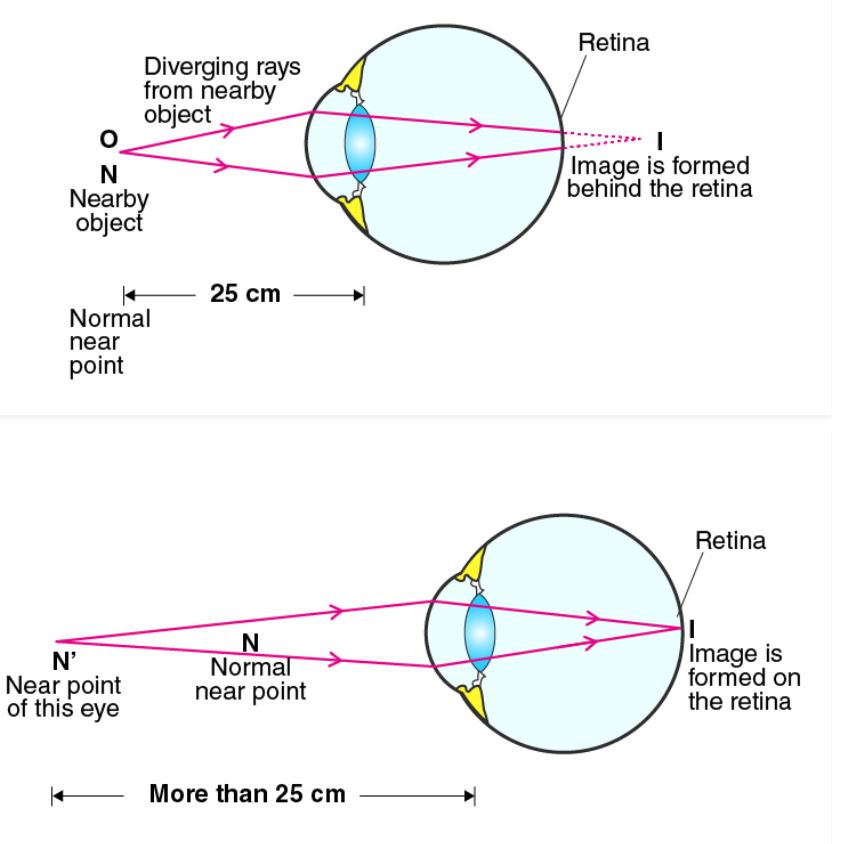a) Long sightedness is a vision problem in which a person can’t see items that are far away yet can see objects that are close by. The two main reasons of long-sightedness are as follows:
I The eye lens’ focal length is too lengthy.
ii) The eyeball has shrunk in size.
Long-sightedness ray diagram:

Ray diagram of correction of long sightedness:

b) To correct long sightedness, a convex lens is utilised.
Given,
u = -0.25m is the object distance.
v = -0.75m image distance
1/v-1/u=1/f
f = 3/8m f = 3/8m f = 3/8m
2.67D = P = 1/f
The eye has a lengthy sightedness to it.
c) You’ll need a concave lens.
Given,
u = infinite, object distance
v = 2m image distance
f = -2m
1/f = -0.5D P = 1/f = -0.5D
eed a concave lens.
